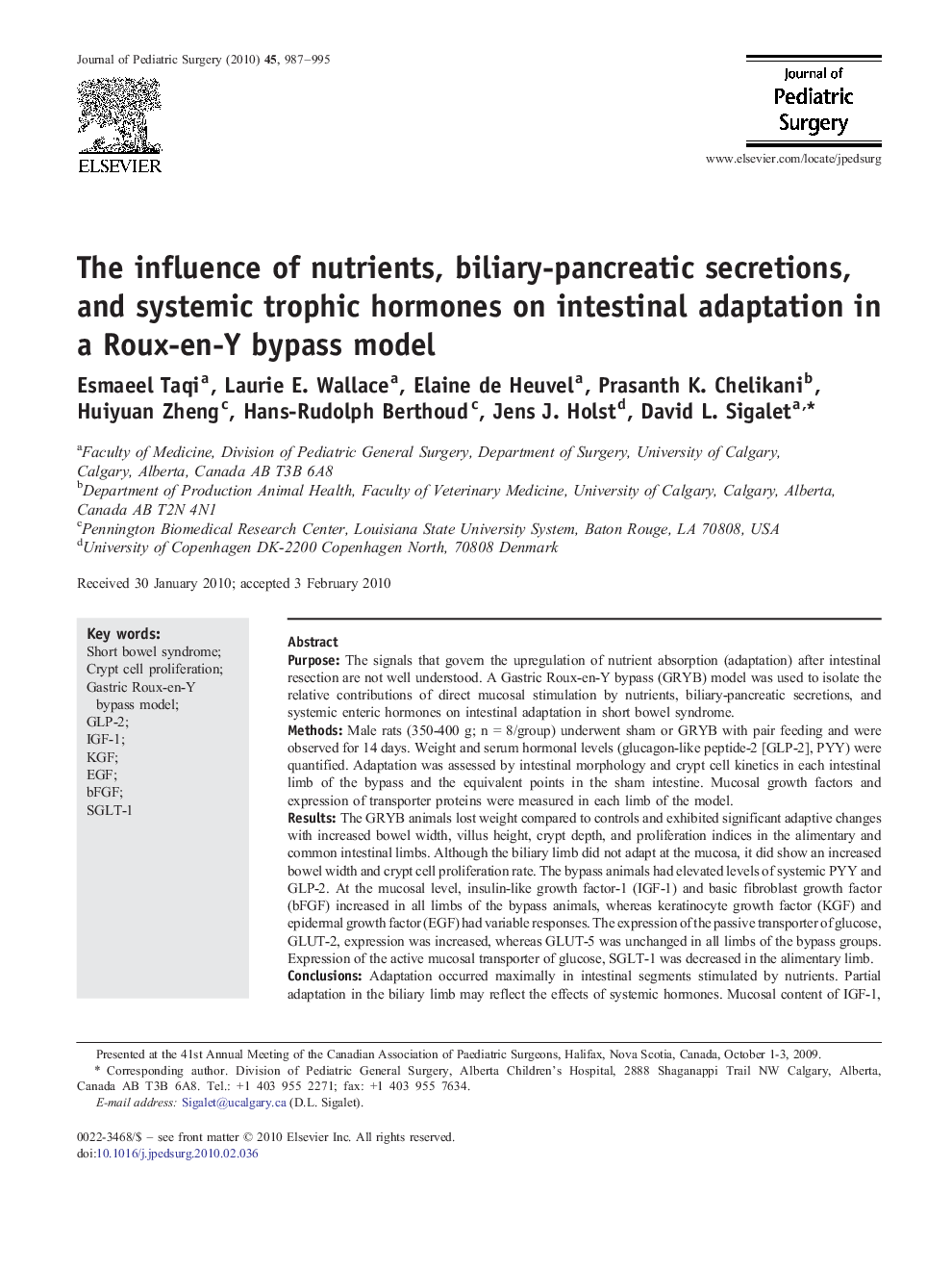| Article ID | Journal | Published Year | Pages | File Type |
|---|---|---|---|---|
| 4157760 | Journal of Pediatric Surgery | 2010 | 9 Pages |
PurposeThe signals that govern the upregulation of nutrient absorption (adaptation) after intestinal resection are not well understood. A Gastric Roux-en-Y bypass (GRYB) model was used to isolate the relative contributions of direct mucosal stimulation by nutrients, biliary-pancreatic secretions, and systemic enteric hormones on intestinal adaptation in short bowel syndrome.MethodsMale rats (350-400 g; n = 8/group) underwent sham or GRYB with pair feeding and were observed for 14 days. Weight and serum hormonal levels (glucagon-like peptide-2 [GLP-2], PYY) were quantified. Adaptation was assessed by intestinal morphology and crypt cell kinetics in each intestinal limb of the bypass and the equivalent points in the sham intestine. Mucosal growth factors and expression of transporter proteins were measured in each limb of the model.ResultsThe GRYB animals lost weight compared to controls and exhibited significant adaptive changes with increased bowel width, villus height, crypt depth, and proliferation indices in the alimentary and common intestinal limbs. Although the biliary limb did not adapt at the mucosa, it did show an increased bowel width and crypt cell proliferation rate. The bypass animals had elevated levels of systemic PYY and GLP-2. At the mucosal level, insulin-like growth factor-1 (IGF-1) and basic fibroblast growth factor (bFGF) increased in all limbs of the bypass animals, whereas keratinocyte growth factor (KGF) and epidermal growth factor (EGF) had variable responses. The expression of the passive transporter of glucose, GLUT-2, expression was increased, whereas GLUT-5 was unchanged in all limbs of the bypass groups. Expression of the active mucosal transporter of glucose, SGLT-1 was decreased in the alimentary limb.ConclusionsAdaptation occurred maximally in intestinal segments stimulated by nutrients. Partial adaptation in the biliary limb may reflect the effects of systemic hormones. Mucosal content of IGF-1, bFGF, and EGF appear to be stimulated by systemic hormones, potentially GLP-2, whereas KGF may be locally regulated. Further studies to examine the relationships between the factors controlling nutrient-induced adaptation are suggested. Direct contact with nutrients appears to be the most potent factor in inducing mucosal adaptation.
